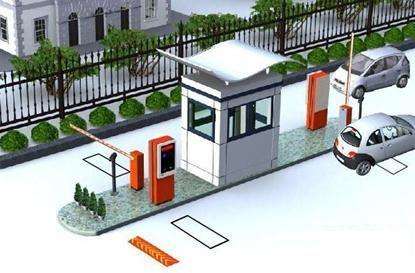Hi, Welcome to our website.

Contact us

Address: Third Industrial Zone, New Komeito Village Shenzhen Guangming 26
Postal Code: 518000
Tel: 0755-29941300
Fax: 0755-27123802
E-mail: 653088031@qq.com
Mobile: 13600187830
Postal Code: 518000
Tel: 0755-29941300
Fax: 0755-27123802
E-mail: 653088031@qq.com
Mobile: 13600187830
Details
Site: Home > News > Industry News > DetailsHuizhou license plate recognition system debugging guide
Time: 2024-09-02 View: 535
Huizhou license plate recognition system debugging guide

In today´s intelligent era, the license plate recognition system has been widely used in parking lots, residential entrances and other places. Haifeng automatic door as a well-known brand in the industry, its license plate recognition system with efficient and accurate recognition ability is favored. However, to ensure the stable operation and optimal performance of the license plate recognition system, proper commissioning is crucial. Below, we will introduce in detail the debugging of Huizhou license plate recognition system in the scene of Haifeng automatic door.
1. Preparation before commissioning
Before we start commissioning, we need to make sure that the following preparations are complete:
1. The hardware equipment is installed: including license plate recognition camera, fill light, control box, road gate, etc., and the equipment is connected normally, without loosening phenomenon.
2. Stable network connection: The license plate recognition system requires data transmission with the server or local computer, so ensure smooth network connection and low network delay.
3. Software installation and configuration: Install the license plate recognition system software provided by Haifeng automatic door, and configure basic parameters according to the actual scenario, such as entrance and exit Settings, charging rules, etc.
Second, the debugging of license plate recognition camera
1. Angle adjustment: The installation Angle of the camera should ensure that the license plate of the vehicle can be clearly photographed, and it is generally recommended that the Angle between the camera and the direction of the vehicle is between 30° and 60°. By adjusting the support of the camera, the license plate is in a horizontal position in the image, and the characters are clearly distinguishable.
2. Focal length adjustment: According to the shooting distance, adjust the focal length of the camera, so that the license plate is moderate in the image, neither too large nor too small. You can judge whether the focal length is adjusted properly by observing the clarity of the license plate in the image.
3. Adjustment of the light: the brightness and Angle of the light should be adjusted according to the actual environment to ensure that the license plate can be clearly photographed under different lighting conditions (such as day, night, cloudy, etc.). The brightness of the fill light should not be too strong, so as not to cause the reflection of the license plate and affect the recognition effect.
Third, the debugging of license plate recognition algorithm
1. License plate positioning parameter adjustment: In the license plate recognition software, there are relevant parameters of license plate positioning, such as color threshold, edge detection threshold, etc. By adjusting these parameters, the system can accurately locate the position of the license plate in the image.
2. Character recognition parameter adjustment: Character recognition is the core link of license plate recognition, including character segmentation, character feature extraction and character recognition steps. By adjusting the relevant parameters, the accuracy of character recognition is improved, and the situation of misrecognition and missing recognition is reduced.
3. Update of training samples: In order to improve the adaptability of the license plate recognition system to new models and new license plate formats, the training samples can be regularly updated to allow the system to learn more license plate features.
Fourth, the overall performance test of the system
After the completion of various debugging work, the overall performance test of the license plate recognition system is needed to ensure that it meets the actual needs of use:
1. Recognition accuracy test: A large number of license plate samples are used for testing to calculate the recognition accuracy of the system. In general, the accuracy should reach more than 95%.
2. Recognition speed test: record the time from the vehicle entering the shooting range to the identification of the license plate, to ensure that the recognition speed meets the requirements of fast passage.
3. Stability test: Run the system continuously for a period of time to observe whether there are abnormal situations such as crash, stutter, and data loss to ensure the stability and reliability of the system.
5. Common problems and solutions
During the debugging process, you may encounter some common problems. The following are some solutions:
1. Inaccurate license plate recognition:
- Check whether the camera shooting Angle and focal length are appropriate, and readjust.
- Check the brightness and Angle of the fill light to ensure even illumination.
- Optimize license plate recognition algorithm parameters and update training samples.
2. Slow system response:
- Check whether the network connection is stable, and upgrade network devices if necessary.
- Optimize system configuration, close unnecessary background programs, and release system resources.
3. Data loss or abnormal:
- Check whether the database connection is normal and repair database errors.
- Check whether hardware devices are faulty, for example, storage devices are damaged.
In short, the commissioning of a license plate recognition system is a complex and meticulous process that requires patience and experience. Through the above debugging steps and methods, combined with the quality products and technical support of Haifeng automatic door, I believe that you can successfully debug a set of excellent performance, stable and reliable license plate recognition system, to provide convenient and efficient vehicle management services for your place!

In today´s intelligent era, the license plate recognition system has been widely used in parking lots, residential entrances and other places. Haifeng automatic door as a well-known brand in the industry, its license plate recognition system with efficient and accurate recognition ability is favored. However, to ensure the stable operation and optimal performance of the license plate recognition system, proper commissioning is crucial. Below, we will introduce in detail the debugging of Huizhou license plate recognition system in the scene of Haifeng automatic door.
1. Preparation before commissioning
Before we start commissioning, we need to make sure that the following preparations are complete:
1. The hardware equipment is installed: including license plate recognition camera, fill light, control box, road gate, etc., and the equipment is connected normally, without loosening phenomenon.
2. Stable network connection: The license plate recognition system requires data transmission with the server or local computer, so ensure smooth network connection and low network delay.
3. Software installation and configuration: Install the license plate recognition system software provided by Haifeng automatic door, and configure basic parameters according to the actual scenario, such as entrance and exit Settings, charging rules, etc.
Second, the debugging of license plate recognition camera
1. Angle adjustment: The installation Angle of the camera should ensure that the license plate of the vehicle can be clearly photographed, and it is generally recommended that the Angle between the camera and the direction of the vehicle is between 30° and 60°. By adjusting the support of the camera, the license plate is in a horizontal position in the image, and the characters are clearly distinguishable.
2. Focal length adjustment: According to the shooting distance, adjust the focal length of the camera, so that the license plate is moderate in the image, neither too large nor too small. You can judge whether the focal length is adjusted properly by observing the clarity of the license plate in the image.
3. Adjustment of the light: the brightness and Angle of the light should be adjusted according to the actual environment to ensure that the license plate can be clearly photographed under different lighting conditions (such as day, night, cloudy, etc.). The brightness of the fill light should not be too strong, so as not to cause the reflection of the license plate and affect the recognition effect.
Third, the debugging of license plate recognition algorithm
1. License plate positioning parameter adjustment: In the license plate recognition software, there are relevant parameters of license plate positioning, such as color threshold, edge detection threshold, etc. By adjusting these parameters, the system can accurately locate the position of the license plate in the image.
2. Character recognition parameter adjustment: Character recognition is the core link of license plate recognition, including character segmentation, character feature extraction and character recognition steps. By adjusting the relevant parameters, the accuracy of character recognition is improved, and the situation of misrecognition and missing recognition is reduced.
3. Update of training samples: In order to improve the adaptability of the license plate recognition system to new models and new license plate formats, the training samples can be regularly updated to allow the system to learn more license plate features.
Fourth, the overall performance test of the system
After the completion of various debugging work, the overall performance test of the license plate recognition system is needed to ensure that it meets the actual needs of use:
1. Recognition accuracy test: A large number of license plate samples are used for testing to calculate the recognition accuracy of the system. In general, the accuracy should reach more than 95%.
2. Recognition speed test: record the time from the vehicle entering the shooting range to the identification of the license plate, to ensure that the recognition speed meets the requirements of fast passage.
3. Stability test: Run the system continuously for a period of time to observe whether there are abnormal situations such as crash, stutter, and data loss to ensure the stability and reliability of the system.
5. Common problems and solutions
During the debugging process, you may encounter some common problems. The following are some solutions:
1. Inaccurate license plate recognition:
- Check whether the camera shooting Angle and focal length are appropriate, and readjust.
- Check the brightness and Angle of the fill light to ensure even illumination.
- Optimize license plate recognition algorithm parameters and update training samples.
2. Slow system response:
- Check whether the network connection is stable, and upgrade network devices if necessary.
- Optimize system configuration, close unnecessary background programs, and release system resources.
3. Data loss or abnormal:
- Check whether the database connection is normal and repair database errors.
- Check whether hardware devices are faulty, for example, storage devices are damaged.
In short, the commissioning of a license plate recognition system is a complex and meticulous process that requires patience and experience. Through the above debugging steps and methods, combined with the quality products and technical support of Haifeng automatic door, I believe that you can successfully debug a set of excellent performance, stable and reliable license plate recognition system, to provide convenient and efficient vehicle management services for your place!


